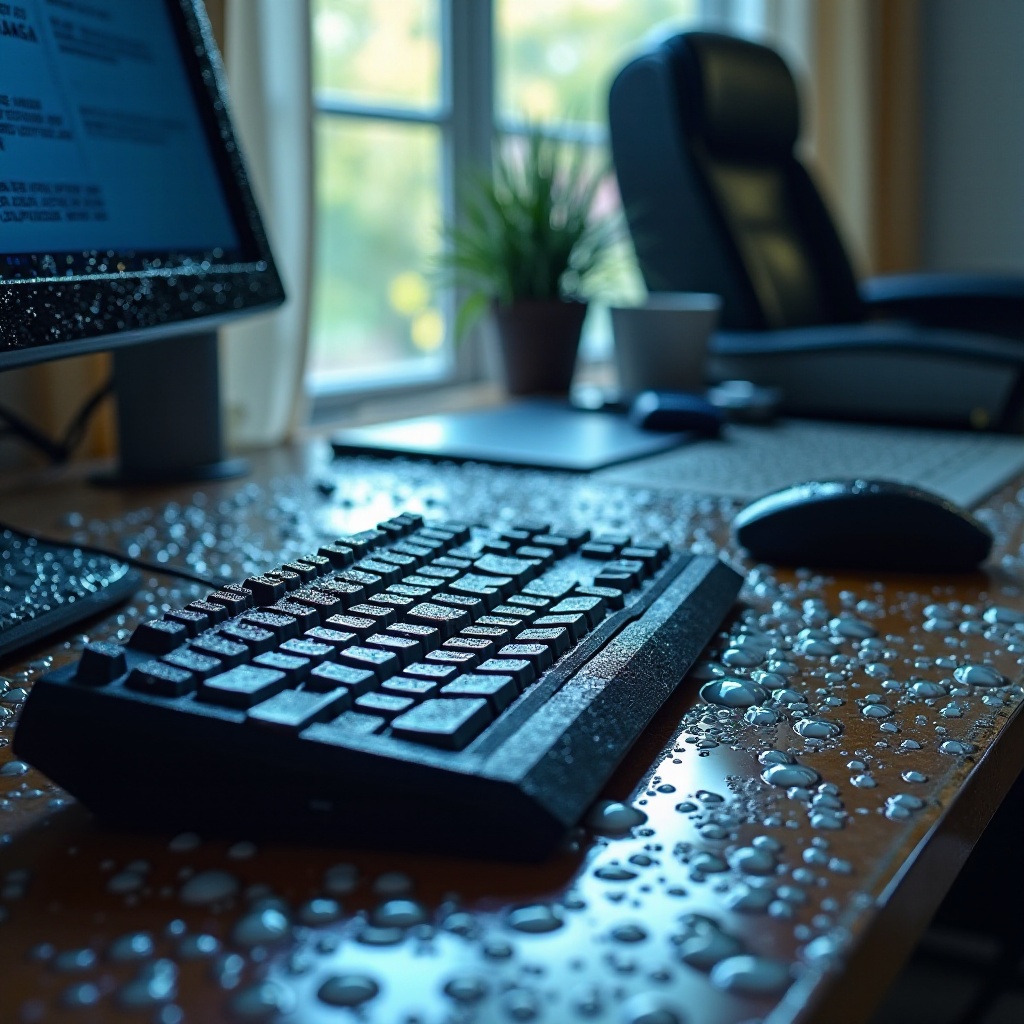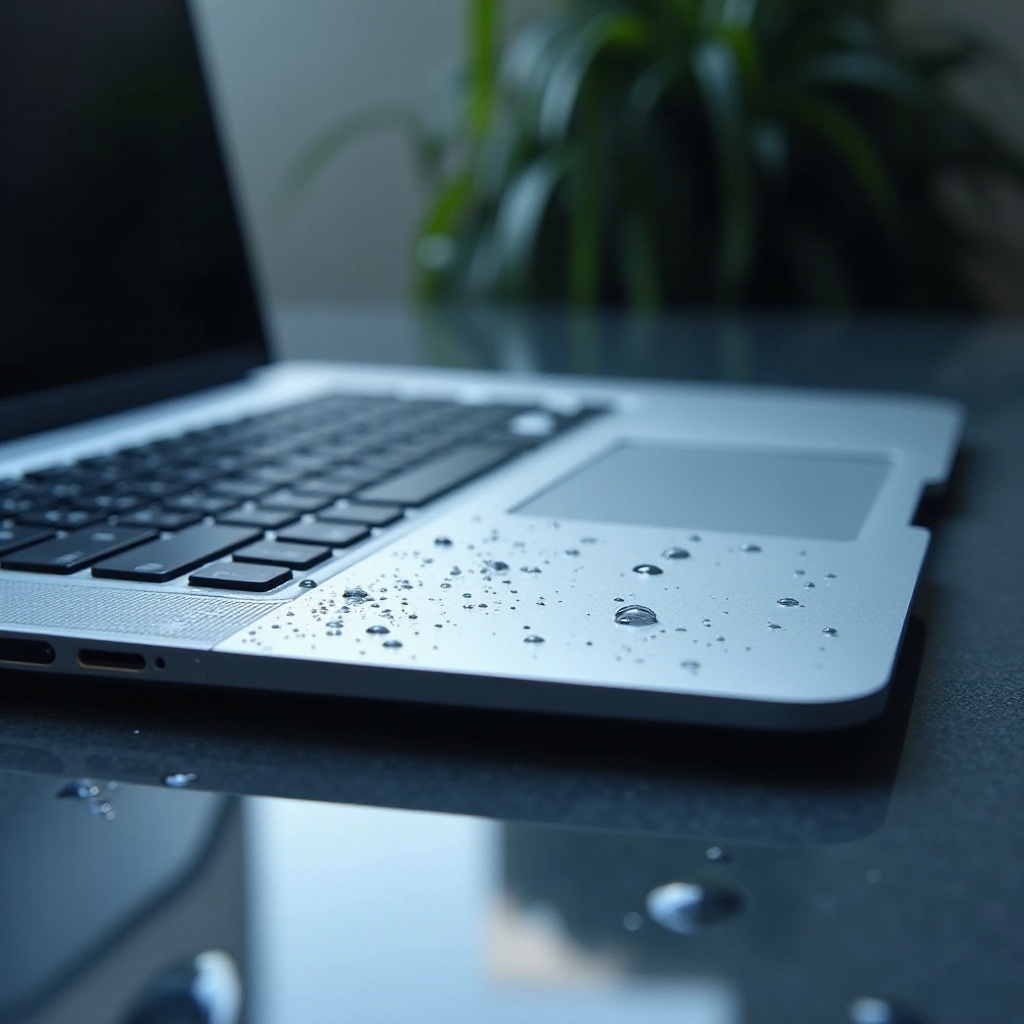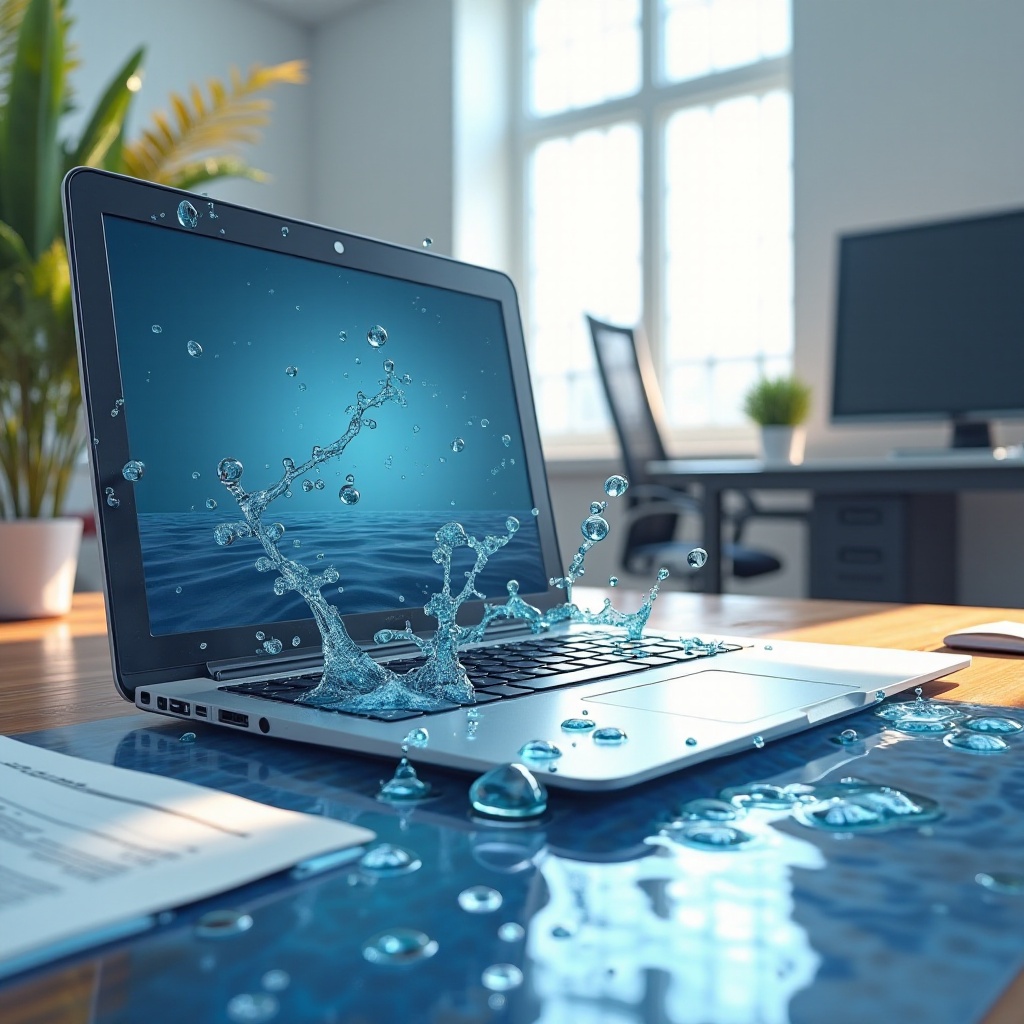Introduction
Water damage can devastate your computer, affecting both internal and external components. Even minor exposure to moisture can lead to significant issues, negatively impacting device performance. This guide covers the common causes of computer water damage, immediate action steps, comprehensive damage assessment, prevention strategies, and financial considerations. By understanding these aspects of computer maintenance, you can better protect your investment and enhance your computer’s longevity.

Common Causes of Computer Water Damage
Understanding how computers can be exposed to water is crucial in preventing damage. There are several common scenarios:
-
Everyday Spills and Accidents: Drinks like coffee or water frequently share space with our computers. An unfortunate spill or accident is often sufficient to cause damage.
-
Environmental Factors and Weather Conditions: High humidity, sudden rain showers, or rain-soaked bags contribute to unintentional water exposure, creeping into devices over time.
-
Human Error and Negligence: Incidents such as leaving a device near a pool or under an open window during a rainstorm can easily lead to water damage.
Preventing each of these scenarios requires awareness and precaution. However, if water exposure does occur, it is critical to act quickly to diminish potential damage.

Immediate Action Steps After Water Exposure
Taking immediate action can significantly mitigate potential water damage. Here’s what you should do:
-
Powering Down and Unplugging Safely: Immediately shut down the computer and unplug it from any power source to prevent electrical shorts.
-
Removing External Devices and Components: Detach all peripherals, including the keyboard, mouse, and USB devices, and if possible, remove the battery to stop further damage.
-
Initial Drying Techniques: Gently blot any visible water with a soft cloth. Avoid shaking the device, use natural airflow or a fan to dry it.
With these steps completed, the next vital task is evaluating the extent of damage and potential repair strategies.
Assessing Damage and Repair Options
After addressing the immediate water exposure, assess the damage to determine suitable repair steps:
-
Identifying Visible and Hidden Damage Signs: Observe for visible signs such as non-responsive keys, flickering screens, or unusual noises that may indicate further issues.
-
DIY Repair Steps You Can Take: When damage appears minor, you may undertake some repairs yourself. Cleaning corrosion from connectors and ensuring all parts are dry are some basics.
-
When to Seek Professional Help: Persistent problems or significant damage indicators mean it’s time to bring in a professional technician for comprehensive repair.
Through assessment, you can decide the most appropriate path, balancing professional intervention and personal repairs as needed.
Preventative Measures to Avoid Future Water Damage
To prevent future instances of water damage, consider these proactive measures:
-
Effective Protective Gear and Accessories: Use waterproof sleeves and covers to protect your computer from potential water exposure.
-
Developing Safe Usage Habits: Create zones where drinks and electronics are separate, and ensure safe storage during travel or when near water.
-
Regular Maintenance and Inspections: Schedule routine inspections to check for moisture or dust buildup to catch potential issues early on.
Implementing these strategies will help maintain the optimal performance and condition of your computer. Furthermore, understanding the cost and insurance implications can aid in making financially sound decisions regarding your device.
Cost Implications and Insurance Considerations
Understanding the financial impact of water damage is crucial in protecting your tech investments:
-
Evaluating Repair vs. Replacement Costs: Compare repair costs against the device’s value and consider if replacement is a more economical choice.
-
Understanding Insurance and Warranty Policies: Review if your insurance covers accidental damage or if extended warranties offer water damage protection.
-
Managing Data Loss Risks: Regular data backups are essential to protect against losses following any hardware failure.
Considering these factors can help mitigate the financial risks associated with computer water damage, providing peace of mind and secure protection.

Conclusion
Effective computer protection against water damage involves both proactive planning and rapid response to incidents. By recognizing potential risks, acting swiftly in emergencies, and investing in preventive measures, you can avoid costly repairs and protect your valuable data. Staying watchful and prepared ensures your technological investments endure, maintaining functionality and reliability in the long term.
Frequently Asked Questions
What should I do immediately if water spills on my computer?
Immediately power down the computer, unplug it, and remove any peripherals and the battery if possible. Use a cloth to blot water and ensure airflow over affected areas.
Can I use rice to dry out my water-damaged computer?
Using rice is generally ineffective for drying electronics. Instead, employ airflow from fans or consult professional repair services in severe cases.
How can I prevent water damage to my computer in the future?
Invest in protective covers and sleeves, maintain a safe distance between liquids and electronics, and schedule regular check-ups to manage moisture and dust.
